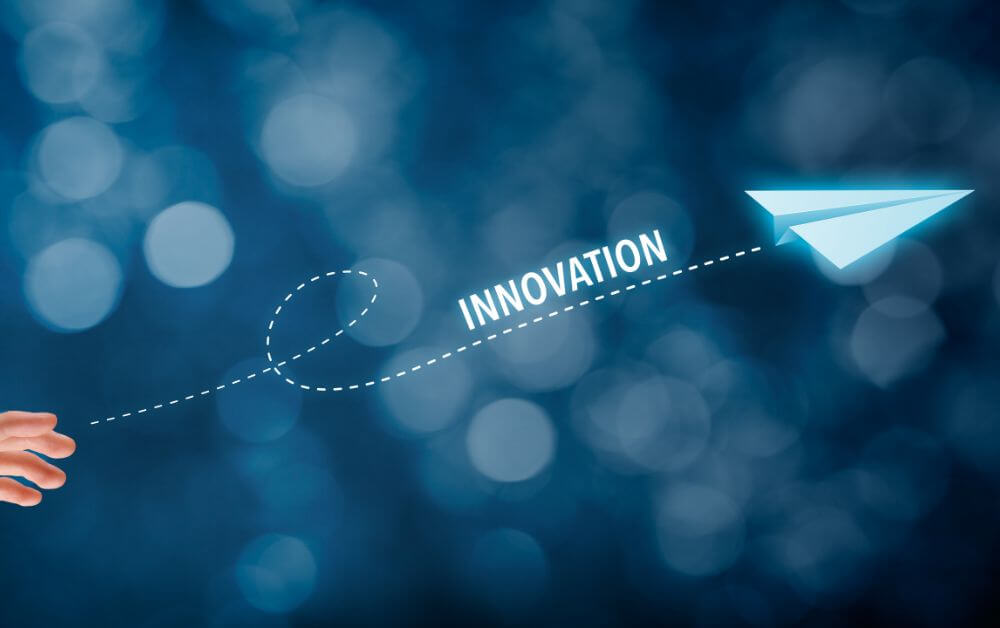Today’s insights are brought to you by my colleague, the Moonshot futurist, Dean van Leeuwen.
Too many people think that innovators are Einstein-haired crazy thinkers who come up with genius ideas. While those people are certainly important to innovation, that’s not actually how innovation works.
Companies that deliver innovation will ensure that everyone feels part of the process and that everyone knows their place and role in that process – including the person who always says, ‘no, this will never work’, because, sometimes, they are right.
Think of Thomas Edison and the light bulb – this has become the very symbol of innovation. And yet, Innovation is not about a “light bulb moment” – it’s about the whole process. It was Edison who conceived of the idea of a lightbulb, the crazy idea that electricity would result in light (it’s not that difficult – electricity produces heat, and lots of heat produces light. The trick is to get it to just the perfect point where there’s light, but not so much heat that everything melts or burns up). Edison then hired a small army of technicians to experiment with different approaches. No one knows how many experiments they tried, but it was certainly hundreds if not thousands — This group of technicians are also innovators, and a good Chief Innovation Officer would give them a lot more credit than Edison ever gave his team.
When finally, they had their breakthrough and discovered what worked, the “lightbulb moment” happened, but this was still not the end of the innovation cycle. If they had stopped there, we still wouldn’t have lightbulbs today. Edison turned next to a group of engineers, who had to devise a way to make lightbulbs at scale – lots of them, as cheap as possible. This part of the innovation process is often overlooked, but it’s vital: making sure the great idea can be replicated, scaled, and actually used.
Henry Ford’s Model T assembly line is one of the most famous of all “process innovations”. The people who come up with these parts of innovation are not often hailed as innovators – but they should be.
Once Edison’s factory was churning out lightbulbs, he still needed at least two more groups of people to help him deliver his innovation to the market: logistics and marketing. Building a delivery infrastructure and convincing people to buy the product are critical components of delivering innovation.
It’s not a perfect analogy, but we hope it makes the point: too much energy is focused on the initial crazy idea, and not enough effort – and praise – is given to the many other parts of the innovation process.
As we can see from these examples, there are many different roles people can play. We refer to the process of ensuring everyone understands their role as: Invitational Innovation. Indeed, there are up to ten roles that can be played in building a culture of innovation Tom Kelley and Jonathan Littman identify the following different styles of innovative thinking. When building a culture of innovation, it’s important that people understand the different roles they can play:
1. Anthropologists: Anthropological researchers immerse themselves in alien cultures and observe carefully. This sort of intense observation is the single greatest source of innovation you can bring to your organisation. Zen Buddhism calls this “the beginners’ mind”.
2. Experimenters: Experimenters are persistent about solving problems. They try lots of prototypes, make drawings, and build and test models. Then, they take what they learn and start all over again.
3. Cross-Pollinators: Cross-pollinators bring together disparate things.
4. Hurdlers: Hurdlers specialise in overcoming obstacles. You can’t defeat them by blocking the direct path to their goal – they’ll jump over it or work around it. Hurdlers treat every obstacle as an opportunity.
5. Collaborators: Collaborators not only work well with others, but they also generate connections among other people. They encourage teams from different disciplines to work together and work among parties to keep everyone on the same page.
6. Directors: Directors are planners and organisers.
7. Experience Architects: Experience architects present ideas by appealing to the senses. They’re interested in aesthetic pleasure as well as understanding.
8. Set Designers: Set designers focus on making physical space both functional and pleasing.
9. Caregivers: Caregivers put people at ease, and their main role is providing good service.
10. Storytellers: Unlike facts, stories forge emotional connections between the teller and the audience. Storytellers can take the ordinary and reshape it into something special, creating inspirational myths and allegories.
Companies that do innovation well ensure that everyone feels part of the process and that everyone understands their role – including the person who always says, ‘but this will never work’, or ‘kill the project’ because, sometimes, they are right.
You can access Dean’s latest research on ‘Closing the Innovation Gap’ – The 7 strategic and cultural essentials that separate successful large-company innovators here, or chat with us about our ‘Full blown innovation’ keynote presentation.


